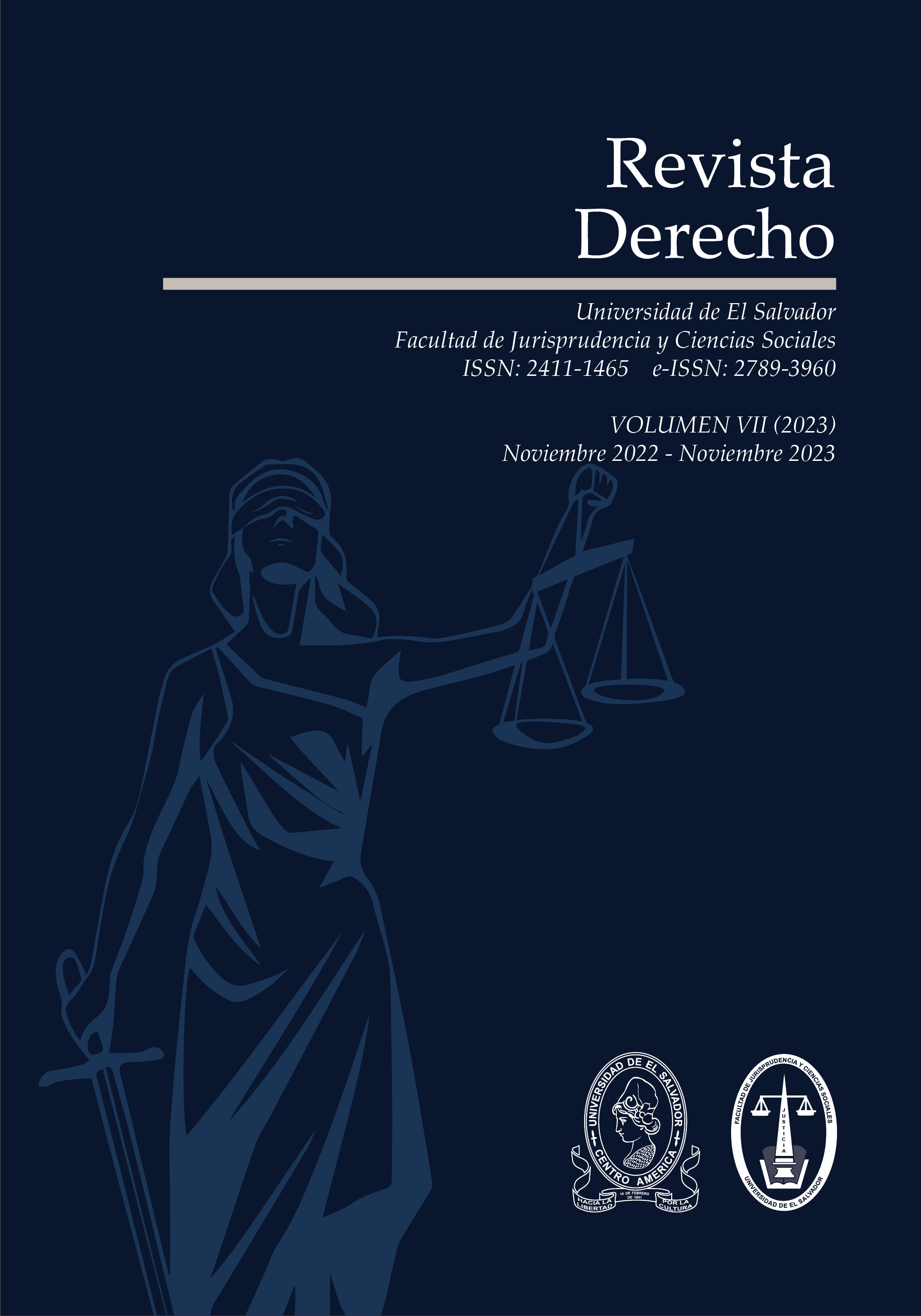Girls, boys and adolescents in the legal protection process from the vision of the principle of best interest
Keywords:
legal protection process, right of access to justice, right to petition and response, principle of best interestAbstract
The use of the term politics is very popular in the everyday lexicon, it appears in hallway The article analyzes the application of the principle of the best interests of the child and its relationship with the right to access justice as a request and response by girls, boys, and adolescents in the legal protection (amparo) process, a right regulated in Article 12 of the Convention on the Rights of the Child and in the "Crecer Juntos” Law. This analysis allows us to understand the mechanisms established for its exercise based on the Convention on the Rights of the Child and Salvadoran legislation, as indicated in General Comment numbers 12 and 14 of the Committee on the Rights of the Child. Furthermore, an analysis is conducted based on national jurisprudence issued by the Constitutional Chamber in legal protection matters to determine the access that this sector has to the aforementioned rights, with the principle of the best interests of the child as a focal point of analysis. Additionally, experiences developed in Mexico regarding legal protection cases filed by children are identified, as seen in the Malecón Tajamar case, an initiative linked to the right to a healthy environment. The article concludes with proposals for positive actions that can be implemented to enhance the right to access justice as a request and response for girls, boys, and adolescents as rights holders.
Downloads
References
Burgos Mata, Álvaro y Gustavo Chan Mora. Cuadernos de Justicia Juvenil Edición Especial. El Salvador: Corte Suprema de Justicia, 2009.
Comité de los Derechos del Niño. Examen de los informes presentados por los Estados partes con arreglo al artículo 44 de la Convención. Observaciones finales: El Salvador. https://www.acnur.org/fileadmin/Documentos/BDL/2012/8535.pdf
Convención Americana sobre Derechos Humanos. San José, Costa Rica: Conferencia Especializada Interamericana sobre Derechos Humanos, 15 de junio de 1978.
Corte Interamericana de Derechos Humanos, El hábeas Corpus bajo suspensión de garantías. Opinión Consultiva OC8/87 del treinta de enero de mil novecientos ochenta y siete.
Corte Interamericana de Derechos Humanos, STC, Voto Concurrente Razonado del Juez Sergio García Ramírez a la Sentencia del Caso Mack Chang Vs. Guatemala, del 25 de noviembre de 2003. https://www.corteidh.or.cr/tablas/r24428.pdf.
Convención sobre los Derechos del Niño. Nueva York: Naciones Unidas, 1991.
Comité de los Derechos del Niño. Observación General Número 12 (2009). El derecho del niño a ser escuchado. Ginebra: Naciones Unidas, 25 de mayo a 12 de junio de 2009. https://www.acnur.org/fileadmin/Documentos/BDL/2011/7532.pdf
Cillero Bruñol, Miguel. “El Interés superior del niño en el marco de la Convención Internacional sobre los derechos del Niño”. En Revista Justica y Derechos del Niño. Número 9. (Santiago de Chile: UNICEF, 2007). https://unicef.cl/archivos_documento/68/Justicia%20y%20derechos%201.pdfc
Comité de los Derechos del Niño. Observación General N°14, El derecho del niño a que su interés superior sea una consideración primordial (artículo 3, párrafo 1). Ginebra: Naciones Unidas, 29 de mayo de 2013. https://www.observatoriodelainfancia.es/ficherosoia/documentos/3990_d_CRC.C.GC.14_sp.pdf
Garfias Reyes Laura Elena y García Rosas Alfredo “El eficaz acceso a la jurisdicción de las niñas, los niños y los adolescentes a partir de la aplicación del principio de su interés superior: el supuesto de definitividad en el amparo”. Dignitas 33, enero-abril (2017): 73. https://dignitas.codhem.org.mx/index.php/dignitas/article/view/51/47
Maraniello, Patricio Alejandro. “El amparo en la Argentina. Evolución, rasgos y características especiales”. En Revista IUS, Volumen 5, N°27, Argentina (2011): 18. https://www.revistaius.com/index.php/ius/article/view/78
Miranda, Luis Villavicencio. “¿Derechos Humanos para quiénes? Reflexiones sobre algunas cuestiones embarazosas”. En Revista de Derecho Valdivia. volumen XXI, N°2, diciembre 2008, (Chile): 49. https://www.scielo.cl/scielo.php?script=sci_arttext&pid=S0718-09502008000200002
Sala de lo Constitucional, Sentencia Referencia 128-2012. El Salvador: Corte Suprema de Justicia, 2015.
Sala de lo Constitucional, Sentencia referencia 642-99. El Salvador: Corte Suprema de Justicia, 2000.
Sala de lo Constitucional, Sentencia referencia 938-2014. El Salvador: Corte Suprema de Justicia, 2015.
Segunda Sala, Sentencia referencia 659/2017. México: Suprema Corte de Justicia de la Nación, 2018.
Ventura Robles, Manuel E. La jurisprudencia de la Corte Interamericana de Derechos Humanos en materia de acceso a la justicia e impunidad. Ponencia pronunciada en el Taller Regional sobre Democracia, Derechos Humanos y Estado de Derecho, organizado por la Oficina del Alto Comisionado de las Naciones Unidas para los Derechos Humanos, 2005.
XIV Cumbre Judicial Iberoamericana, Reglas de Brasilia sobre Acceso a la Justicia de las Personas en condición de Vulnerabilidad (Brasilia: 2008). Regla 78.
Downloads
Published
Issue
Section
License
Copyright (c) 2023 Revista Derecho

This work is licensed under a Creative Commons Attribution-NonCommercial 4.0 International License.
The authors transfer the copyright rights in favor of the Faculty of Jurisprudence and Social Sciences of the University of El Salvador (through Aequus Editorial) to include their writing in Revista Derecho.








